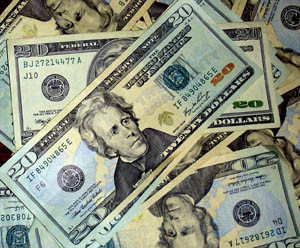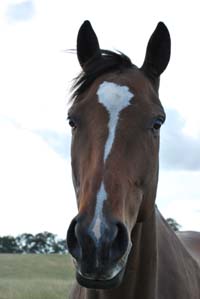Grandma Rie’s 2013 Money Camp – Part Three
 Teaching the next generation to successfully handle money and personal finances is normally a family responsibility. Although parents bear much of the burden to teach, train and model good personal finance, extended family members can also contribute.
Teaching the next generation to successfully handle money and personal finances is normally a family responsibility. Although parents bear much of the burden to teach, train and model good personal finance, extended family members can also contribute.
Although my grown children do very well in the personal finance arena, they learned from us by osmosis, without any special or formal training by my spouse or I. When they presented me with grandchildren, I vowed that I would take an active part in teaching financial literacy to them.
As a result, I started a one week ‘Grandma Rie’s Money Camp‘ in 2011 and held our third annual one this year. In my last post on Money Camp, I gave you information on what we did and used with more of the money concepts covered in this year’s camp – Earning and saving.
Today, I will give you information on what we did and used with remaining concepts.
Assessments
This year, I wanted to start easing into having the kids do some assessments. We didn’t try to make it a test of what they learned this year, just more of a ‘can you do this’ kind of activity.
My daughter-in-law and her Mom (aka the other Grandma) supervised this activity on the first day of camp while I was working to get the eBay sales items posted. It seemed to go well and Mom got a first hand look at what her kids knew or didn’t know from the activity.
It was pretty simple – just some pages printed off the internet which asked the kids to identify what kind of coin was pictured or how many of another coin were equal to it. They also worked directly with the different coins I brought – all just at the kitchen table.
Resources used.
- Real US coins of all sorts.
- The Kids Learning Station has printable sheets for basic coins and for money matching and I used a mixture of both.
Coin identification & value.
This concept was obviously just reinforcement for the two 9 year olds but was needed for the almost 6 year old. She still has trouble distinguishing between a quarter and a nickel.
Resources used.
- Book – If You Had a Million Dollars. This book has lots of pictures and really shows the value of a million dollars by displaying things like how many pennies it takes to make up a million and so forth.
- Assessment sheets from above that weren’t used previously.
- Real coins to sort, match and count.
- Coloring pages – I printed and brought pages of quarters to color from the US Mint. They have a kids web page with all sorts of stuff on it for kids to learn about coins – games, color pages, cartoons and more. Since we had vacationed in Yellowstone and at Mt. Rushmore and since I had given the 5 ¾ year old a Parks quarter collecting book for quarters in last years camp, I brought a color page for Mt. Rushmore and Yellowstone. I also brought a state quarter color page for the state in which the kids live.
Making change.
It is a pet peeve of mine that making change is becoming a thing of the past. I believe, like many, that just because a computer does it for us, doesn’t mean we shouldn’t learn how.
We had a mini session for the two nine year olds out on the porch – each armed with their own (you guessed it) laptop computer. We used a Fun Brain activity in which they were asked to make appropriate change. The game tells them what the purchase cost and what money was given and asked them to make change by filling in the number of dollars, quarters, dimes, nickels and pennies are needed.
They both stuck to it for about 15 minutes and told me it was ‘hard’. Of course they were trying to prove their macho by doing levels higher than ‘easy’!
Later we set up a pretend store – using what ever the kids wanted to use from around the condo and letting them mark prices on the item with paper and pencil. We set up a ‘register’ and used real money. Each took turns being the ‘clerk’ and making change. The 9 year olds still got into this pretend play activity, one of them even drawing up a receipt for each buyer! The 5 ¾ year old still loves pretend play and was all the way in, but of course couldn’t make change yet so we focused on just having her id the coins she was giving back in change.
On the last day, I tried to introduce counting back change – as every cashier used to do in olden days. They had set up their ‘business’ in the condo so we adults could buy stuff from them and so were dealing with real products and money. In case you don’t know, the idea is that starting with the amount given to the cashier, the cashier then counts change up to that amount. So, if I bought something for 9.99 and paid with a $10 bill, the cashier used to say “and a penny makes 10”. It didn’t work well as we were all tired and I even messed up on the counting back. I’ve almost decided this is an unneeded skill so probably won’t pursue it in future years.
Resources used.
- Online game: Changemaker
- Real money with pretend play.
What we didn’t have time to do.
Stocks activity.
One activity I had planned was to have the kids hunt for products in the condo. Once they selected one (say maybe the TV), we would try to see what company made it. Then we would look up that company to see if it was publicly owned and also do some sleuthing on what the stock statistics looked like if so.
Money terms flashcards.
It’s important to understand the language of any area you are trying to learn. Money and finances are no exception. Although we used many money terms during the course of the week and tried to make sure the kids understood them through definition, questioning them to make sure they understand and etc., I had also planned to do some flashcards. I prepared handwritten flashcards with a term on the front and the definition on the back. My intent was to have each child individually quiz one adult at a time and then switching roles. We didn’t have time to do this and at the point I had it planned, we had just encountered some negativity from the older kids – so we did a fast gear switch to something more active and fun for them.
Online money games.
We didn’t use these this year, but you may find them interesting to help your child learn about saving:
- Coin counter and identification: http://www.practicalmoneyskills.com/games/peterpigs/
- Games to teach business concepts: http://www.richkidsmartkid.com/minigames/profit.htm
Well, that covers it. We had an busy, fun and very tiring week at Grandma Rie’s Money Camp. Hopefully the kids learned a lot and look forward to next years version!
What are your thoughts on the concepts I chose to try to teach this year?



